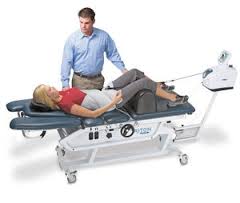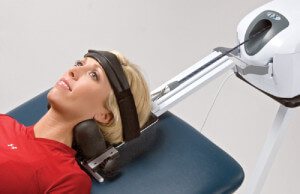
Treatments
Joint Mobilisation
Mobilisation of a joint describes the application of pressure to one or both parts of a moveable joint to improve available range (reduce stiffness) or decrease pain by progressively moving available range further past the onset of pain.
When performed in a controlled manner, joint mobilisation is a highly effective, safe and non-invasive way of regaining normal, pain free function.
Spinal Manipulation
Joint manipulation (usually of the spine) is a frequently used manual technique which immediately improves joint mobility and reduces pain. Commonly this technique is also referred to as an ‘adjustment’ although physiotherapist and medical practitioners refer to the technique as a joint “manipulation’’.
WHY UNDERTAKE MANIPULATION?
When performed by experienced Practitioners, manipulation can provide immediate reduction of symptoms and return full pain free range. It is often used in conjunction with other treatment modalities to help alleviate muscle spasm or localised inflammation.
IS MANIPULATION SAFE?
Manipulation should never be performed by inexperienced or novice therapists. It is not safe or appropriate for use in patients who have osteoporosis, osteopaenia, significant disc prolapses, nerve root compression, malignancies, fractures or bony cysts. As with all medical and allied health practices, selection of the appropriate technique for the appropriate patient will result in an optimal outcome. Our therapists are highly experienced in the safe administration where appropriate following a full explanation of the technique, and its benefits after receiving consent from our patients.
Traction
Spinal Traction describes the longitudinal separation of vertebrae and decompression of discs.
Technically tr action of any joint whether peripheral (such as the ankle or hip joint) or spinal, is a variant on many different types of mobilisation techniques designed to increase joint range of movement, reduce pain by decompressing painful or inflamed structures such as nerve roots, or both.
action of any joint whether peripheral (such as the ankle or hip joint) or spinal, is a variant on many different types of mobilisation techniques designed to increase joint range of movement, reduce pain by decompressing painful or inflamed structures such as nerve roots, or both.
Force is applied longitudinally gently separating painful and restricted joints and associated soft tissue structures.
Traction is particularly useful in cases where damage to a spinal disc, or spinal arthritic changes have resulted in compression of nerve roots leading to sciatic or radiating pain. By alleviating compressive pressure on a disc, the nerve ceases to transmit pain impulses along it’s distribution and, depending on how long the nerve has been compressed, will enable the return of normal muscular strength of function.
Traction is effective for:
– Bulging, prolapsed, or herniated discs
– Spinal stenosis
– Sciatica
– Facet syndrome
– Degenerative disc disease
– Neck pain
– Pain radiating down the arm
– “Pinched nerves”
– Spondylitis
Traction can be applied to either the lumbar (lower back) or cervical (neck) regions and can be modified in direction, angulation and force to achieve the desired degree of decompression.
Back Pain/Sciatica lumbar traction
A pelvic harness is worn by the patient. The specially equipped table on which the patient lies is slowly extended, and a distraction force is applied via the pelvic harness until the desired tension is reached. This is followed by a gradual decrease of the tension, and the cycle is repeated. The cyclic nature of the treatment allows the patient to withstand stronger distraction forces compared to static lumbar traction techniques. The level of tension is individually calibrated and recorded.
Neck Pain/ Radicular arm pain
The patient’s head is comfortably positioned into a supportive device that pulls behind their neck gently distracting the joints in the upper part of their neck. As more tension is used, distraction forces affect joints further down the spine. It is through careful calibration and positioning that we are able to apply just enough tension to relieve symptoms.

